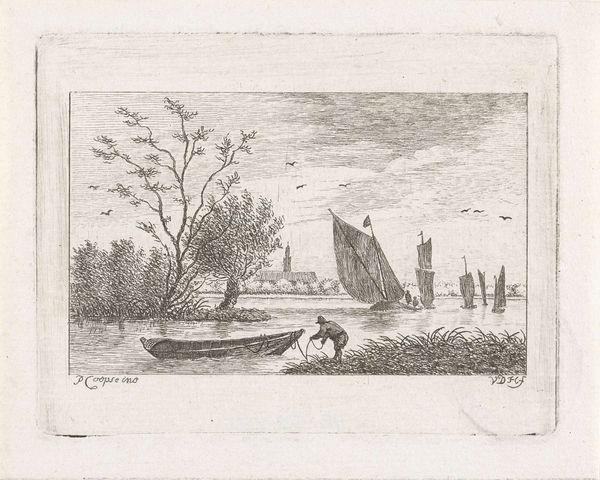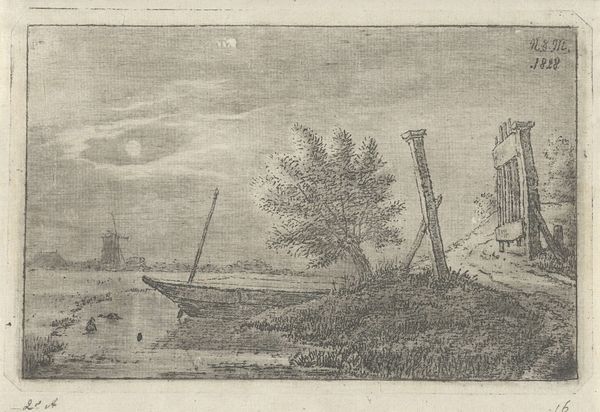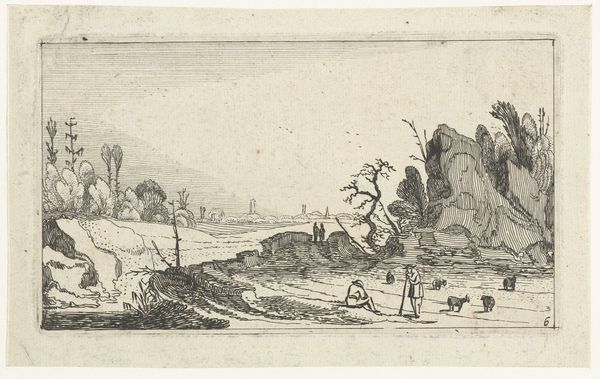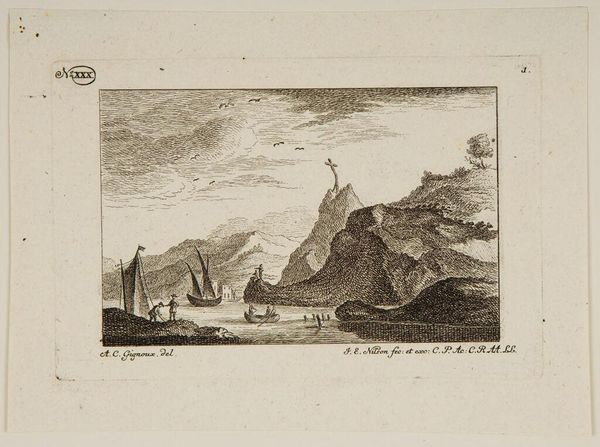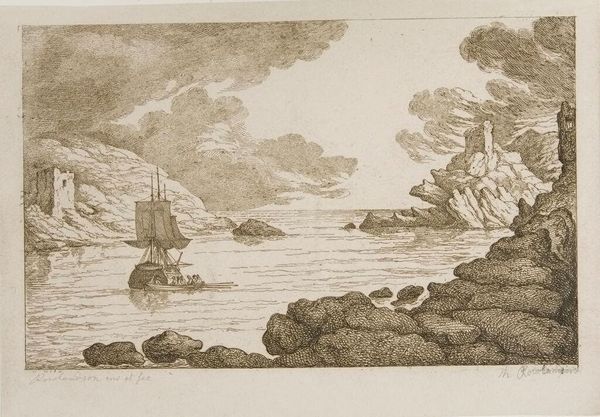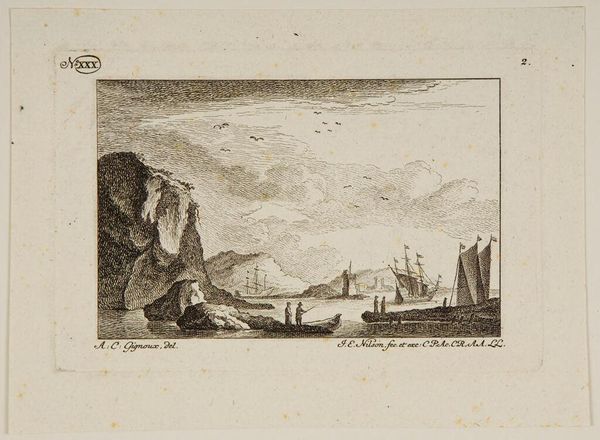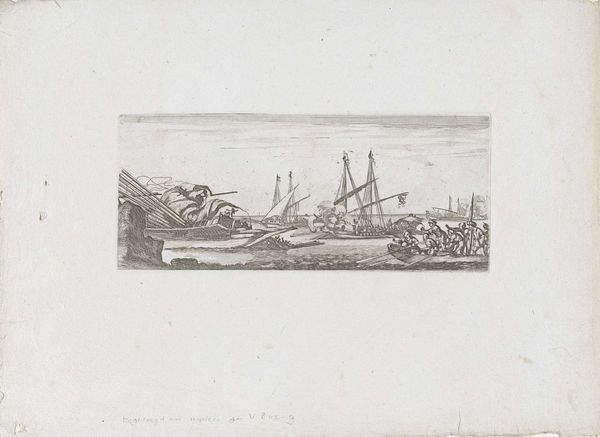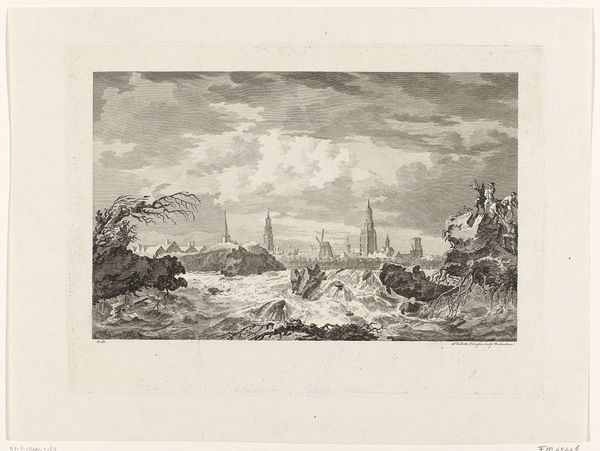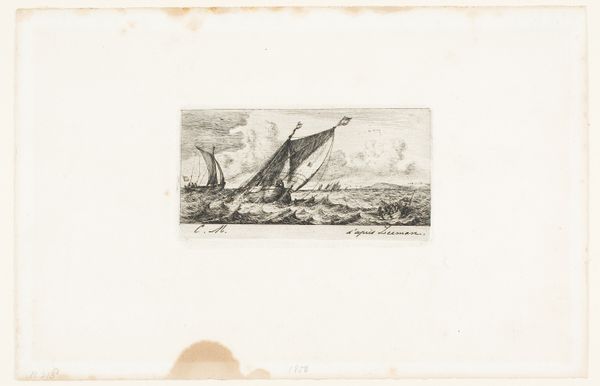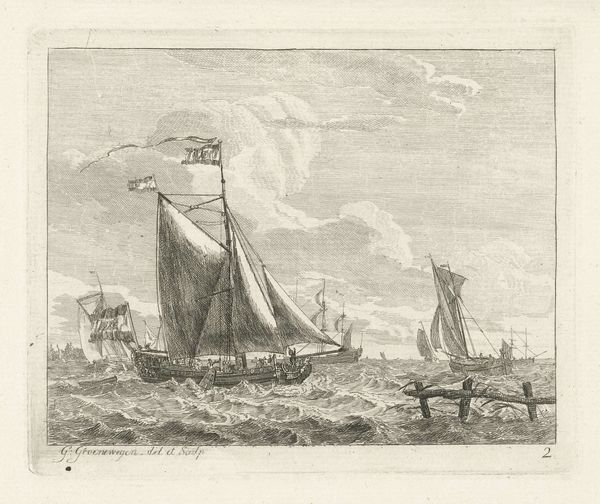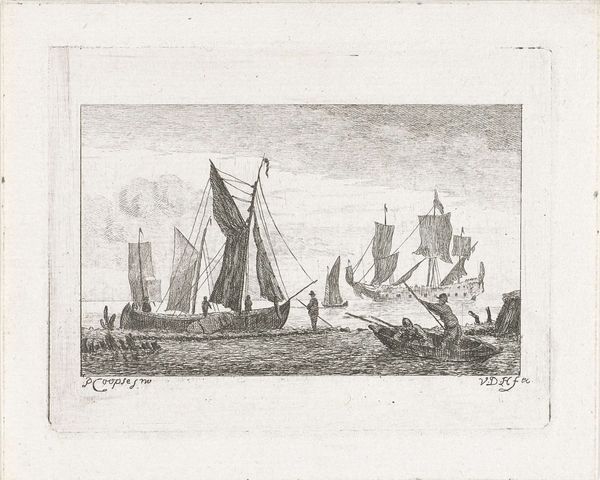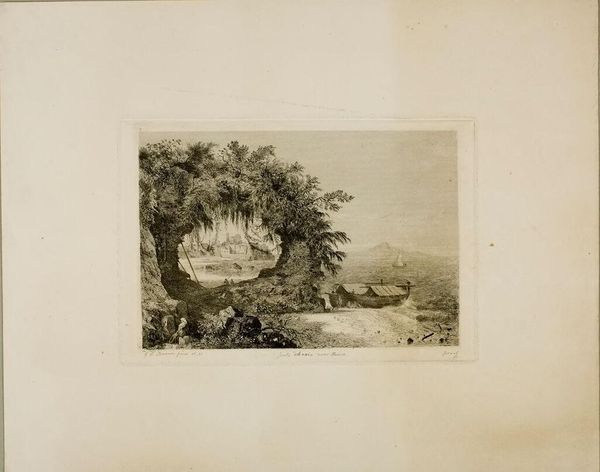
Dimensions: height 74 mm, width 96 mm
Copyright: Rijks Museum: Open Domain
Editor: Here we have "Zeilschepen op een rivier," or "Sailboats on a River," an etching by Anthonij van der Haer, dating from around 1745 to 1785. It has such a wonderfully delicate feel; I find myself immediately drawn to the contrast between the sturdy boats and the stillness of the scene. How do you interpret this work? Curator: For me, it's the quiet symbolism embedded in everyday life. Look at those sailboats. They aren't merely boats; they’re carriers of commerce, exploration, and even conflict. Consider their prevalence in Dutch Golden Age art. What do you think this recurring image might signify? Editor: Perhaps a connection to the sea, a source of both prosperity and risk for the Dutch? Curator: Precisely. And see those figures on the shore, seemingly ordinary? They're tied to the larger narrative of Dutch identity. The river itself acts as a visual metaphor for the passage of time and the flow of history. Van der Haer, by focusing on the mundane, subtly weaves in the grand narrative of a culture deeply shaped by its maritime endeavors. Do you notice how the etching technique itself – with its fine, deliberate lines – mirrors the careful, calculated nature of maritime trade and expansion? Editor: Yes, now that you mention it, the meticulous detail seems to emphasize the importance of precision and skill in that era. I hadn't thought about the technique itself as carrying symbolic weight. Curator: Exactly! Each element, seemingly simple on its own, contributes to a complex understanding of Dutch identity and cultural memory. Editor: That’s fascinating. I’ll definitely look at Dutch Golden Age paintings differently now. It seems even the everyday scenes hold layers of meaning. Curator: Indeed. Art invites us to see beyond the surface and decipher the symbols that shape our understanding of history and culture.
Comments
No comments
Be the first to comment and join the conversation on the ultimate creative platform.
